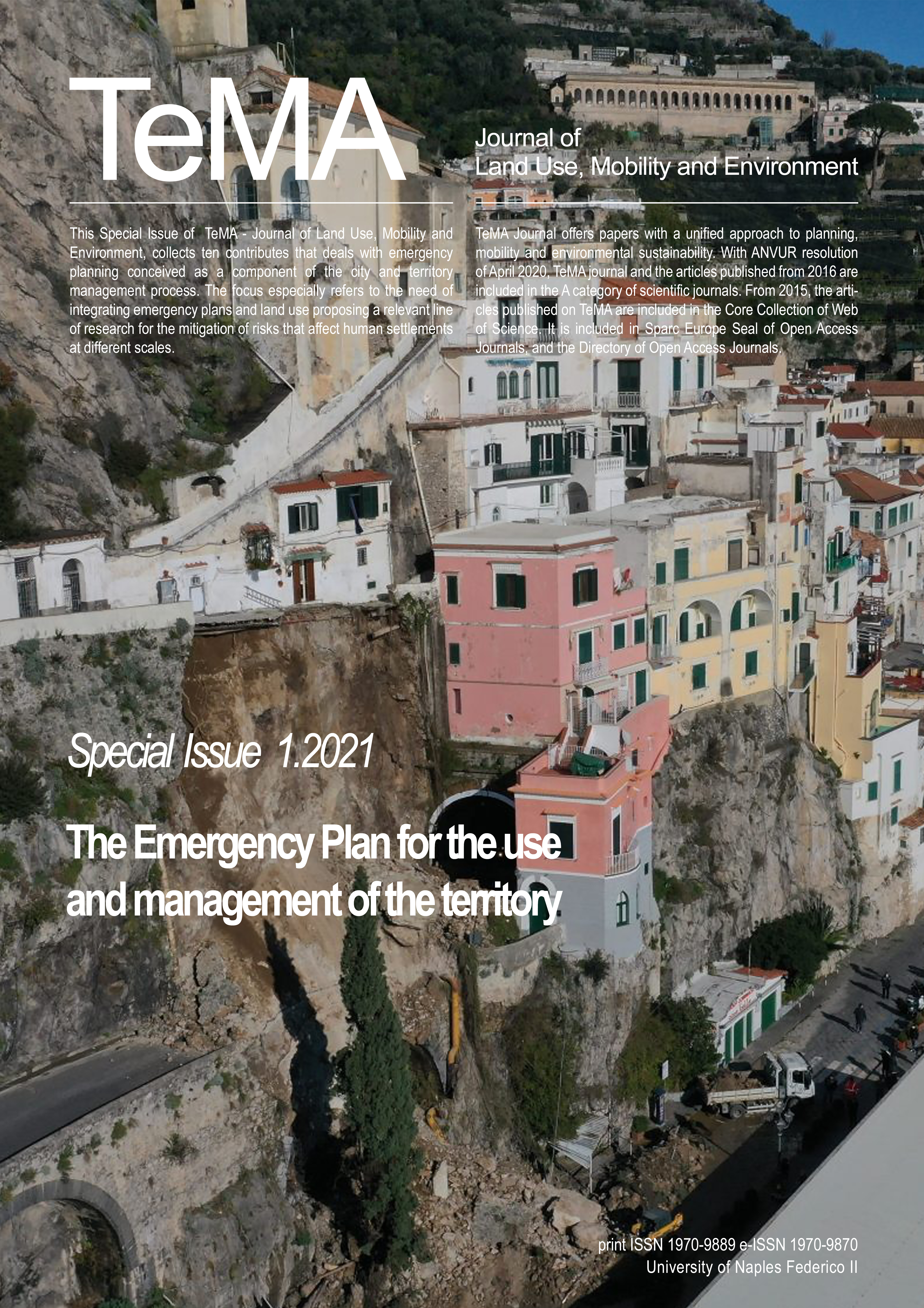Water-related risk reduction in urban development plans
Recommendations for resilient planning practices from a Sicilian case study investigation
DOI:
https://doi.org/10.6093/1970-9870/7680Abstract
The goal to create hazard-resilient communities through sustainable land-use planning requires a fundamental change to the way in which planning is conceptualized and practiced. This implies a deep revision of the operationalizing policy and legislation at local levels and a clearer interpretation of the in-between domain of risk and emergency assessment and management.
This study deals with the complex relation existing between land use planning and disaster risk reduction and focuses on water-related risks. It aims to explore and define a set of proposals for increasing the effectiveness of actions taken by local administrations, at the stage of drafting and implementing local land use masterplans, so to enhance all aspects of disaster risk reduction in the planning practice.
In particular, novel contents for the local urban masterplans are investigated based on a case study located in eastern Sicily, Italy: considerations concern urban key criticalities analysed within the catchment of the Lavinaio-Platani, the latter acknowledged as the most dangerous stream in the considered area.
Although focused on a specific context, the outcomes of this research may be relevant for a wider range of urbanized environments, especially if prone to flooding risk, by providing targeted recommendations and cross-sectoral perspectives to profitably inform innovative masterplans.
Downloads
Downloads
Published
How to Cite
Issue
Section
License
Authors who publish in this journal agree to the following:
1. Authors retain the rights to their work and give in to the journal the right of first publication of the work simultaneously licensed under a Creative Commons License - Attribution that allows others to share the work indicating the authorship and the initial publication in this journal.
2. Authors can adhere to other agreements of non-exclusive license for the distribution of the published version of the work (ex. To deposit it in an institutional repository or to publish it in a monography), provided to indicate that the document was first published in this journal.
3. Authors can distribute their work online (ex. In institutional repositories or in their website) prior to and during the submission process, as it can lead to productive exchanges and it can increase the quotations of the published work (See The Effect of Open Access)


